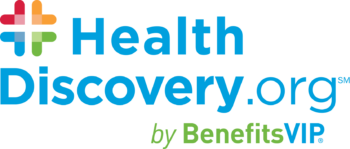If you have questions about those explanation of benefits (EOB) forms you receive after visiting the doctor or healthcare provider, you’re not alone. Is the EOB a bill? Is the EOB always accurate? What do those numbers mean?
Why You Receive an Explanation of Benefits
After your healthcare insurer receives a claim submitted by you or your healthcare provider (doctor’s office, lab, hospital, outpatient services, etc.), the insurer sends you a form explaining how it processed the claim. This document, which you receive in the mail or can view online, is the explanation of benefits.
The explanation of benefits is not a bill.
It’s an explanation of how a particular claim for service was processed and paid by your health insurance company. If there is any portion that is not covered by your plan, you may receive a balance bill from your healthcare provider.
EOBs can look different from carrier to carrier for health insurance you receive at work, for public insurance (Obamacare) or for retiree healthcare (Medicare). Still, there are similarities among them all.
An EOB typically includes:
- The provider of the service/treatment
- The date you received the service, the amount billed and the amount covered by your insurer
- The amount your insurer paid and any balance you’re responsible for paying to the provider of the healthcare service (your copay and/or coinsurance)
- How much money has been credited toward any required deductible (the amount you pay for services before your insurance kick in)
- Any services that weren’t covered by your insurance
Here’s a sample EOB and a detailed explanation of how to read it.
Medical Billing Errors
Review each EOB closely and compare it to any receipts you received during doctor visits, tests, etc. Also compare it to statements you may receive from your healthcare provider. It’s important to look at each EOB because medical billing errors can happen. If you get your insurance through your job, you may have access to an employee advocacy service center that will help you if you encounter an issue with a claim.
The employee advocacy service center typically provides assistance in correcting an error on the EOB or a follow-up bill.
Easy EOB Access
The easiest way to view and keep track of your EOBs is to sign up for paperless explanation of benefits through your insurer. You can elect to be notified by email when a new EOB is uploaded to your account.
You also have an option to receive EOBs in the mail.
You should receive an EOB after every visit to your doctor or another healthcare provider. Every time a provider submits a claim on your behalf, your insurance company must generate an EOB. Call your insurer if you don’t get one or it is not showing online following a service.
Medical Fraud Alert
Your EOB does more than explain your claims—it can tip you off if you’re a victim of medical fraud. In that case, the EOB may list healthcare services that you didn’t receive. If you think someone has gained access to your insurance information and is using your healthcare benefits, the National Healthcare Anti- Fraud Association recommends that you:
- Call your health insurance company immediately
- Contact your State Insurance Fraud Bureau
- Visit STOP Medicare Fraud
- File a complaint with the State Medical Boards
Visit HealthDiscovery.org for related topics.














